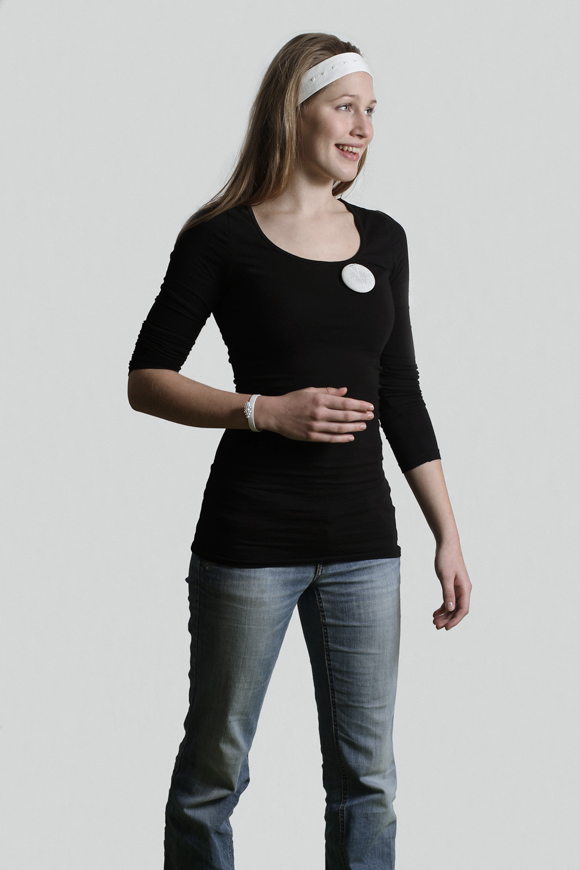
EXTREME ENVIRONMENTAL CONTROL - 3rd generation
Present day life is pervaded by scepticism and fear of intangible factors like radiation, terrorism or surveillance. Extreme Environmental Control translates these invisible parameters into experiences. A set of three pieces of jewellery gives the wearer knowledge of his environment and allows him to change his behaviour accordingly.
conRAYS
A boosted speaker integrated in a brooch generates sound when being disturbed by high radiation. The brooch can be worn close to parts of the body that particularly need to be protected from radiation, like the heart, the brain or the abdomen. Being aware of the level of radiation the wearer will be encouraged to look for a safer place to stay.
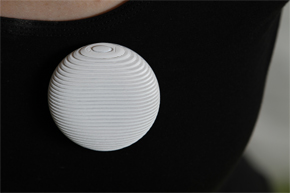
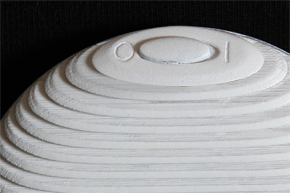
click to hear sound of brooch
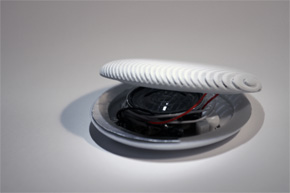
conSPY
For this piece infrared LED lights are integrated in a headband to make the wearer’s face invisible for cameras. Whereas the lights blind the cameras, the human eye cannot see it. Simultaneously the wearer of the headband feels the attack through vibration.
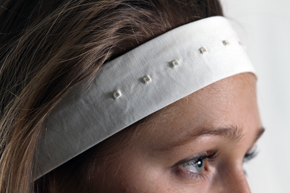
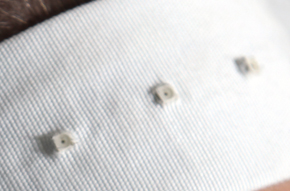
conTRUST
Giving away some control to your beloved one will be perceived as great prove of love. Having nothing to hide it will be a pleasure to you to hand this bracelet to your partner who thus will be able to always feel your heart rate. Receiving little electric impulses and thus knowing about your high pulse your partner might want to call to surprise you while flirting or to help you out in an unpleasant situation. If during the course of the relationship more freedom is needed, the bracelet’s positive perception might change - finally becoming a burden. Being taken off the bracelet breaks representing the end of the relationship.

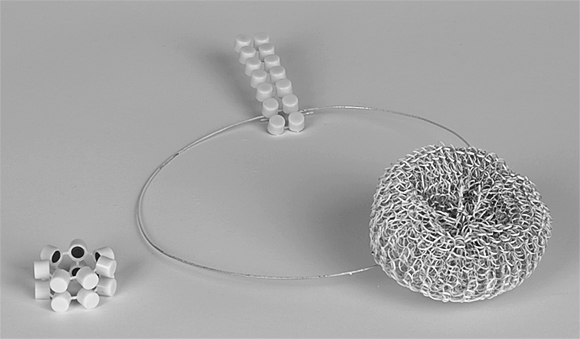
SENSORING - 2nd generation
Instead of hanging out on facebook, in 2060 everyone is playing pervasive games on the street. People are constantly playing and would be bored to live the "real" life they lived fifty years ago. Thus even the way to work becomes an adventure. While the young don't distinguish between virtuality and reality anymore, especially older people are disturbed by that. They feel insecure and want to regain control over reality. They want to know if their counterparts are seriously talking to and interacting with them or if they are just playing in a game.
Camouflaged as exclusively decorative jewellry "Sensoring" is a device that helps these people find out details about their counterpart - as well in privacy as in public.
A ring captures the different parameters of frequency of the surrounding people. It analyses the Radio, WLAN, GPS, Bluetooth or Infrarot signals that the players send out to search for other participants or to scan the environment. Linked to a database that includes every existing game, the ring can keep apart people who are playing in a game from those who are just using GPS to find their way.
Giving a shiver down ones back, the device warns the owner if his counterpart is playing in a game or secretly taking a picture of him. The shiver is provoked by a pendant of a necklace that hangs down the back of the wearer.
Simultaneously another wired peace at the front ot the necklace blocks "attacks" by disturbing the radiation. If the owner wants to allow the radiation to reach him, he needs to turn his ring through 180° to open the field.
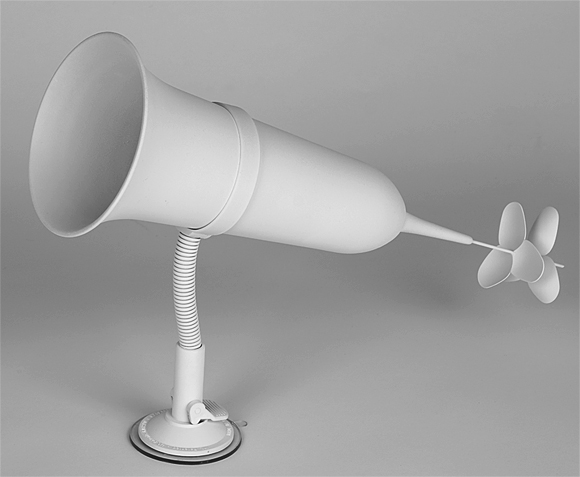
SECRETARY - 1th generation
The secretary - made out of four items from a 1-euro-shop - emerged along this story:
“Good morning, Henry, you’re early today: it’s not six o‘clock yet.”
“Mmmh” mumbles Henry Robinson.
Mary senses that Mr. Robinson is in a bad mood this morning. To enliven him, she disperses an exhilarating drug and a fresh breath of forest scented air together with his medicine and says some nice words to him.
Following she informs him: “Apart from you only Mr. Bridge is here already. He is having a coffee in the lounge. You could join him there, if you like. Be careful talking about your project though. He might be too interested in your ideas. And don’t stay too long, Mr. Grant wants to talk to you at six. I can inform you about everything else later.“
Year 2080.
Depression is a common and constantly increasing disease of the time. The world of 2080 is overpopulated. Yet most people feel lonely. To sustain one’s position everyone has to work hard. This competitive environment leads to self-seeking people who lack trust and human relations. Moreover, it recently became very hot and heavy radiation makes it dangerous to stay outside.
Mary is Henry Robinson‘s „secretary“ - a device that is attached to his desk with a vacuum cup. Despite being an electronic device, Mary is very humanly: She is secretary, fairy godmother and psychologist in one “person”.
With her propellers she can independently fly around, sneak about and gather information. Leaning against a wall with her widely opened side, Mary can hear what is said on the other side.
THE ARCHEOLOGY OF FUTURES
A hypothetical time traveller is walking through the galleries of an archaeological museum (at some undetermined time in the future). While browsing through the galleries he sees its collection of artefacts. He tries to understand what they were, how they worked, what kind of societies they described, which behaviours and cultures they supported and which problems they really solved (or created). What invaluable knowledge will he bring back to his time?!
Unfortunately we do not have the benefit of time travelling or the ability of gazing into a crystal ball, at least not with a recognised level of accuracy or credibility, so we cannot open a window into the future and learn from it. But even if we could, it would not necessarily mean that this hindsight would help us change it for the better and, like we have seen in many sci-fi movies, novels and history itself, following an idea of progress not always brings us the desired outcome. Why speculate about it then? Because by venturing ideas about the future, these will, by all means, have an impact into what we make of it. In this way we can open windows into imperfect futures analysing possible applications of technologies and ideas, and how these will impact our cultural, social, political and biological constructs. This is the role of the designer or artist, to steer our consciousness, allowing us to travel the journey through a diverse set of possibilities rather than a defined path.
Our cultures are built upon residues, which we re-reinter-pret and reuse creating new systems and structures built on what we have inherited. Within this context, the challenge is to create new objects, which can be typologically disentangled from our learned understandings of the world, and thus offer alternative ways to live, work and communicate.
Through the aesthetical and typological exploration of objects and the future scenarios that these inspired, this program encourages the use of narratives as a design tool leading to unexpected areas of research.
The starting point of the project was a workshop where students were asked to purchase 3 objects from a 99-cent shop. The next step was to assemble these through an intuitive exploration of form. This led to the creation of a series of unexpected objects that had to be contextualised through narrative writing, which would set the scenarios where they could exist and perform. Finally, all the objects were painted white in order to erase their past lives, as these new artefacts are not meant to be understood as ready-mades
but as objects in their own right.
Departing from these narratives/objects, each student wrote their personal brief to continue with the project, to further explore the object idea and its context, developing a 2nd and a 3rd generations. The concept of generation is traditionally understood as some kind of technological improvement of the product. In this case, the idea of generation refers to the project and the performance of the design process itself. Whilst retaining its explorative and critical ethos, each generation introduces more personal control over all aspects of the design process and more research into the technological, scientific and social aspects of the project ( Rosario Hurtado and Roberto Feo; El Ultimo Gritto ).
<
